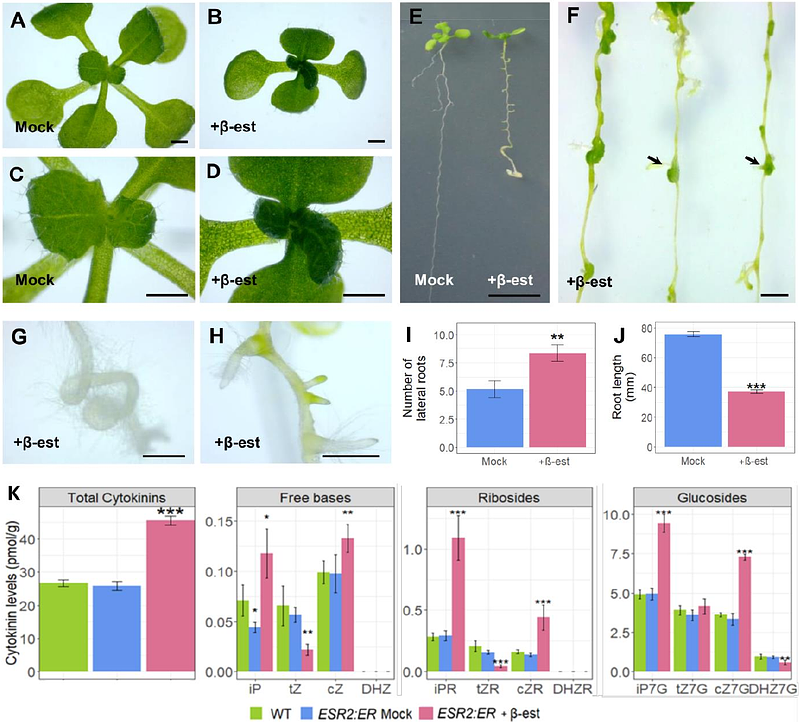ESR2 orchestrates cytokinin dynamics leading to developmental reprogramming and green callus formation

ESR2 orchestrates cytokinin dynamics leading to developmental reprogramming and green callus formation
Duran-Medina, Y.; Diaz-Ramirez, D.; Herrera-Ubaldo, H.; Di Marzo, M.; Gomez Felipe, A.; Cruz-Valderrama, J. E.; Vazquez, C. A.; Guerrero-Largo, H.; Colombo, L.; Novak, O.; de Folter, S.; Marsch-Martinez, N.
AbstractCallus formation and shoot regeneration are natural plant abilities triggered by stress and damage. They are also key components of tissue culture, which for many species is crucial for gene editing, transformation, propagation, and other technologies, and their study provides valuable insights into plant development. The transcription factor ENHANCER OF SHOOT REGENERATION 2 (ESR2/DRNL/BOL/SOB) promotes green callus formation in roots and shoot regeneration when overactive, while the phythormone cytokinin plays a prominent role in both phenomena. Yet, the positive action of ESR2 on the cytokinin pathway had not been previously described. We explored the effects of ESR2 and found that cytokinin content and the expression of the cytokinin biosynthesis gene ISOPENTENYLTRANSFERASE 5 (IPT5) increase in plants where ESR2 activity is induced. ESR2 also regulates the cytokinin signaling repressor ARABIDOPSIS HISTIDINE PHOSPHOTRANSFER 6 (AHP6), and surprisingly, the ESR2-stimulated green calli formation requires both IPT5 and AHP6. Therefore, ESR2 promotes both cytokinin biosynthesis and cytokinin signaling inhibition and requires a paradoxical combination of these two for green callus induction. This finding provides a foundation to better understand the processes involved in tissue reprogramming towards callus formation and the role of ESR2 in shoot regeneration and the development of new organs.


